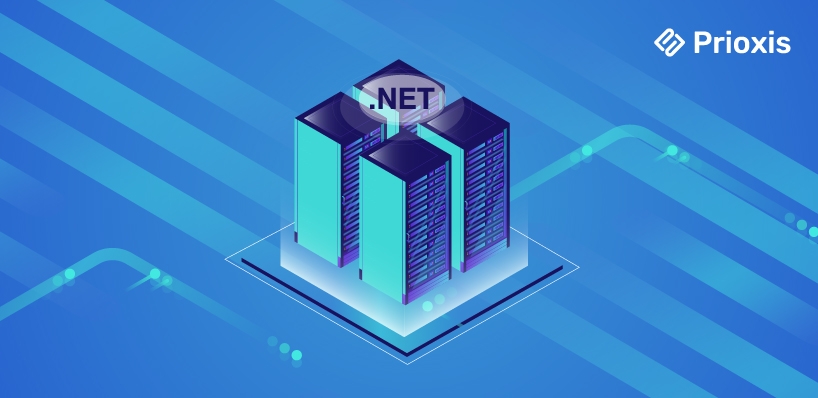.NET Microservice : Architecture & Design
 Admin
Admin Cloud
Cloud Aug 07, 2024
Aug 07, 2024

Table of Content

Priyanshi Patel
Priyanshi Patel is a senior .NET developer with a keen interest in exploring the ever-evolving world of technology. After work, she dedicates her time to writing about the latest trends and advancements in .NET development, sharing insights on cutting-edge technologies and development practices.
Today, everyone's looking for ways to make apps and websites faster, easier to update, and better for users. That's where microservices come in - they're like building with LEGO blocks instead of one huge chunk of clay. When it comes to optimizing these blocks, the .NET framework is a powerhouse.
Microservices stand out as a modular and scalable approach, offering significant advantages over traditional monolithic architectures. The .NET framework, renowned for its robustness and versatility, emerges as a powerful foundation for building microservices.
By combining the power of .NET with microservices, developers can unlock a world of possibilities for creating efficient custom software development solutions and microservices based applications. Join us as we explore how to leverage .NET to transform large, cumbersome applications into agile, modular components that work seamlessly together
In this blog, guide you through the process of utilizing the .NET framework to develop applications that are not only easier to manage but also more robust and scalables.
Understanding Microservices
Microservices, as the name suggests, are small, independent services that work together to form a larger application. Unlike monolithic architectures and monolithic applications, where all functionality is bundled into a single codebase, microservices break down the application into discrete components. Each microservice handles a specific business domain or task, allowing for greater modularity and flexibility.
Role of .NET in Microservices
The .NET framework, with its comprehensive suite of development tools and libraries, is perfectly suited for crafting microservices. It caters to a wide range of developers, from seasoned professionals to emerging software companies in India and beyond, looking to deliver high-quality custom software solutions. The framework's support for multiple programming languages and its rich ecosystem make it an excellent choice for developing microservices.
Benefits of Using .NET For Microservices
Scalability and Performance
The .NET framework excels in handling high volumes of traffic, ensuring microservices are both scalable and performant.
Multi-Language Support
.NET's compatibility with numerous programming languages allows developers to select the best language for each microservice, optimizing development efficiency.
Extensive Development Tools
ASP.NET Core, Entity Framework Core, and other .NET tools facilitate the development and deployment of microservices, streamlining the entire process.
Integration Capabilities
.NET's ability to integrate seamlessly with existing systems makes it easier for organizations to transition from monolithic to microservices architectures without disrupting their operations
Architectural Considerations
A successful microservices architecture with .NET requires careful planning. Key considerations include defining service boundaries, ensuring effective communication between services, managing data efficiently, and building resilience into the system.
Service Boundaries
Establishing clear boundaries is essential for the autonomy of microservices, contributing to a system that is easier to manage and scale.
Communication Protocols
Microservices rely on APIs and messaging protocols for interaction, emphasizing the need for well-defined interfaces and ensuring loose coupling between services.
Independent Data Management
Allocating a dedicated database to each microservice allows for more flexible and scalable data management strategies.
Resilience Strategies
Designing microservices with fault tolerance in mind — through patterns like circuit breakers and retries — enhances the overall stability and reliability of the application.
.NET Microservices Design Patterns
When building ,.NET core microservices, several design patterns prove invaluable in addressing common challenges and ensuring robust architecture. Here are a few notable patterns:
- Service Registry and Discovery ensures dynamic communication and scalability.
- API Gateway simplifies client interactions by serving as a unified entry point to the system.
- Event Sourcing captures changes as events, facilitating a comprehensive audit trail and scalability.
- CQRS (Command Query Responsibility Segregation) optimizes performance by separating read and write operations.
- Saga Pattern addresses long-running transactions across multiple services, ensuring data consistency.
- Containerization and Orchestration with tools like Docker and Kubernetes streamline deployment and management.
Explore Further: .NET Core Best Practices
Conclusion
Integrating .NET for building microservices paves the way for developing scalable, efficient, and reliable web applications. This strategy is essential for programmers and software development firms alike, aiming to utilize the .NET framework for cutting-edge application development.
By adopting .NET microservices, developers and organizations can enhance their software solutions' performance and flexibility, aligning with the dynamic demands and leverage the full potential of .NET core microservices for your projects.
Choosing .NET and ASP.NET core for your microservices projects places you at the innovation forefront, creating adaptable, fast, and resilient software. Engaging with a visionary company like Prioxis not only provides access to top-tier .NET development expertise but also aligns you with the best software architecture practices.
Get in touch